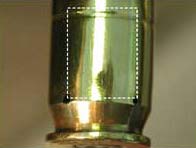Researchers in the UK have recently revealed new methods for detecting fingerprints that can change due to age, smoking habits, drug use, and even certain personal sexual devices.
 |
| New techniques can detect fingerprints that are invisible to the naked eye (Photo: BBC) |
The new research also promises to produce high-quality copies of fingerprints that have been “forgotten” for several days or even weeks at crime scenes. The focus of this study is to find fingerprints on firearms or bomb fragments, which are often among the most difficult types of evidence to locate.
Under the guidance of Dr. Sue Jickells from King’s College London, this research is yielding positive results by observing the chemical components of fingerprints and how they change over time. Dr. Jickells stated that when a person touches anything, many materials still “stick around,” which are primarily lipid molecules: “There are many lipids in fingerprints, and there is a high probability of finding them.”
One such lipid, called squalene or a precursor to cholesterol, is densely present in fingerprints. Squalene will decompose after a certain period, similar to neutral and non-neutral fatty acids that remain on a surface after contact. This decomposition is what has historically made it impossible to recover fingerprints after a certain time frame. By leveraging knowledge of how these organic compounds decompose, Dr. Jickells’ team has proposed methods to collect high-quality evidence from relatively old fingerprints, demonstrating that fingerprints can provide clues about the individual who left them behind.
It is well known that adults, children, and the elderly leave different types of organic compounds in their fingerprints. The new findings suggest that the bodies of individuals who use drugs inevitably secrete certain chemicals (through metabolic processes) that they have consumed. For instance, a smoker’s body secretes cotinine, a chemical produced when the body metabolizes nicotine. Current research is continuing to “collaborate” with rehabilitation centers and hospitals offering methadone pain relief to observe how this drug alters fingerprints.
An additional study conducted by Professor Neil McMurray and colleagues at Swansea University in Wales is also aimed at collecting more fingerprints in serious crime cases. McMurray’s team has shown the potential to recover fingerprints on metal surfaces (shell casings, explosive fragments, etc.). Fingerprints left on guns and bomb casings are often the result of sweat, making them difficult to recover using powder and other chemical techniques. Instead, Professor McMurray measures the minute electrochemical reactions that occur when fingers touch metal.
A device called the Scanning Kelvin Probe is used to measure the tiny changes in electric potential caused by these reactions. Fingerprint samples have even been found on metal heated to 6000°C. This technique has proven effective with iron, steel, aluminum, zinc, and brass, and can even adapt to the curves found on shell casings. Professor McMurray noted that ultimately, the research could lead to the development of a handheld device to analyze fingerprints at crime scenes. The fingerprint research was presented at a conference in London organized by the Physical Sciences and Technology Research Council, highlighting the importance of “how science can support criminal investigations.”


















































